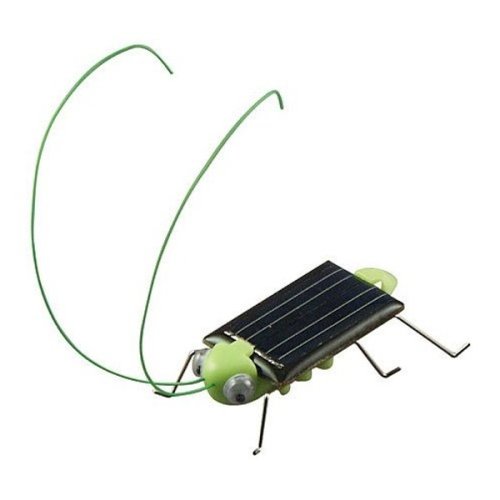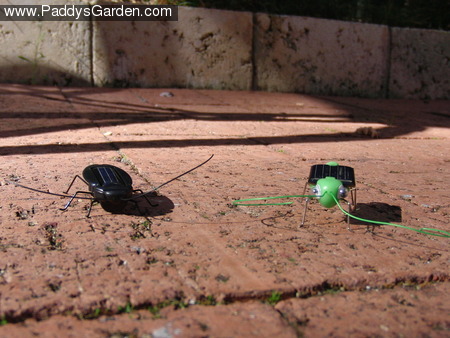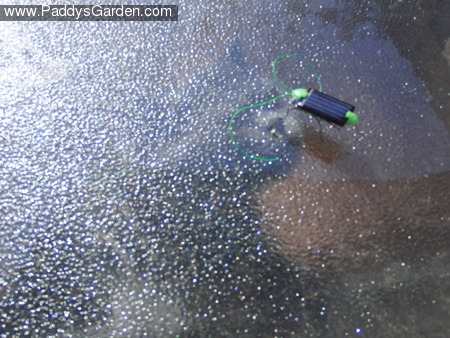Paddy just got given one of these crazy solar powered grasshoppers. As soon as you put it in the sun it vibrates enough to make the critter scamper around the floor just like a real insect.

Order the Solar Powered Grasshopper online at Amazon!
For the price, I recommend you get a few because they are quite scary in small groups 🙂
We also got a solar cockroach although as you will see from the pictures it’s solar cell is much smaller than the grasshopper’s so it needs stronger sunlight. Both solar cells really need direct sunlight to get them scampering. you won’t get any movement on cloudy days or even under bright lamps.
[flashvideo file=http://paddysgarden.com/garden/wp-content/uploads/2010/05/PaddysGarden.com-SolarGrasshopper.flv /]
Paddy’s grasshopper video (press play) or watch on youtube
The solar powered grasshopper and solar powered cockroach both use the same technique to generate movement. There is a tiny motor inside that has an unbalanced weight on it. When the solar cell generates power it is fed to the motor which turns the unbalanced weight and vibrates the grasshopper enough to move it in a haphazard path.
The grasshoppers will only move around on hard flat surfaces like bricks or table tops.
They’re solar powered crickets are also amusing at the office but make sure you have access to some direct sunlight.


[…] RSS Feed « The Grasshopper […]
[…] lot of people are asking about the crazy solar powered grasshoppers that paddy road tested a few weeks […]
Love the grasshopper skin do you see those often? I’ve never seen one wodenr if birds or other critters eat them? (I did find a small mantis skin once.)I’m still not sure about that grass that you call Miscanthus . What species is it again? It certainly doesn’t look like any Miscanthus sinensis form that I’ve ever seen (that’s the most commonly grown Miscanthus species).